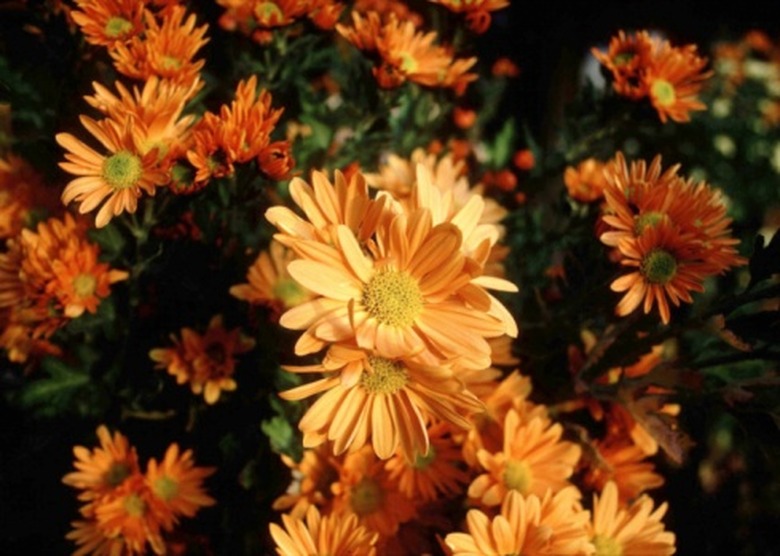Chrysanthemum Companion Planting
Chrysanthemums (Chrysanthemum spp.) are desirable for their bright colors, hardy nature and long-lasting blooms. Also called mums, these flowers pair attractively with other annuals and perennials, especially fall-blooming species. In addition, some species of mums produce natural chemicals that kill harmful soil nematodes and which repel insects. For this reason, chrysanthemums are often planted next to vegetables as a deterrent to insect pest infestations.
Annuals
Classic bedding plants such as pansies and violas are a colorful choice for surrounding your chrysanthemums with more color. These plants also grow well in containers. Snapdragons, with their slender stalks of blooms, are a nice foil to the more rounded shape of most mums. Gerbera daisies are as brightly colored as many chrysanthemums, which makes them an excellent complement to the flowers. Bracteantha, or straw flowers, look very similar to mums and have the same, moist but well-draining soil preferences.
Perennials
Pair daisylike chrysanthemums such as Chrysanthemum x superbums with similar-looking coneflowers. These perennial plants bloom at the same time as mums and in complementary colors. Or, plant chrysanthemums with Dianthus plants (such as carnations), many of which will remain attractive well into winter. Other perennials that make good companions for chrysanthemums include Lamium, which is a spreading ground cover and Eupatorium maculatum, or Joe-pye weed.
Foliage Plants
Foliage plants offer the perfect backdrop to showier mums. Many persist into winter, offering a lovely view even after the mums have faded. Heuchera is desirable for its colorful, fall-hued foliage. Ornamental cabbage and kale, which come in shades of deep green, cream and purple are equally lovely surrounding mums in the ground or in containers.
Other Plants
Chrysanthemums and tomatoes don't make the most attractive pair, but some mums provide valuable protection for tomatoes, other vegetables and ornamental plants, protecting them from harmful insect pests. C. coccineum is a species that kills deadly root nematodes. The plant's flowers, along with those of C. cinerariaefolium contain pyrethrins, which are insecticides. These and other less-known chrysanthemums will repel common damaging insect pests. In addition, white-blooming mums will repel Japanese beetles, so plant them next to grapes and roses, both favorites of the beetle.
